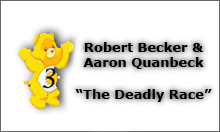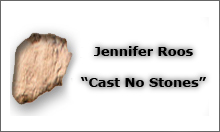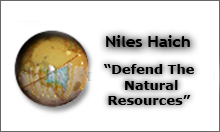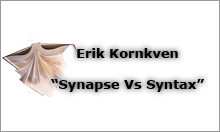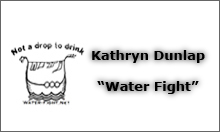History and Theory of MEmorials
Ulmer's interest in electronic monuments reaches back to at least the early
1990s, but National Public Radio (2007, May 28) reported on this "modern
phenomenon" of online memorialization as a citizen-led response to the loss
of life in Iraq. Joyce Walker (2007) argues that online memorialization
is "particularly conducive to the formation of what Chris Hables Gray (2002)
terms 'the cyborg citizen'" (p. 151). Ulmer (2005) presents a similar argument
as part of his rationale for re-engaging the public sphere and "mak[ing]
it possible for monumentality to go 'live'" (p. xxi). Some students
are already engaged in memorialization, whether through a Facebook group
remembering the Virgina Tech shooting victims or an individual site commemorating
a friend or family member. I have found through my own engagement with electronic
monumentality that I am now more aware of, engaged in, and sensitive to
acts of public memorialization, and as James Loewen (1999) argues, we need
to be aware of the racism, omissions, and mischaracterizations of public
monuments across America if we want to be citizens engaged in the public
sphere.
Although Ulmer's writing is theoretically complex, his projects are well-described,
conceptually rich, and do not require advanced software or hardware skills.
The MEmorial is not primarily a tools-based assignment; instead, it is an
assignment and genre that starts with a problem or disaster in need of monitoring,
and evolves into a project that does need to be represented through the
software and hardware that constitutes what Ulmer calls the "electrate
apparatus." Instead of starting with a premise like "I want my
students to blog," or "I want my students to make a video,"
the MEmorial starts with problems, social and personal, that need to be
addressed. And while many conventional argument papers, and even visual
argument assignments, also encourage students to research and address pressing
contemporary issues, the MEmorial, drawing specifically from the avant garde
literary and art tradition, challenges conventional consulting or problem
solving approaches to these issues. "As opposed to the classic style
of the essay still taught in most schools (understandably, since school
is an institutionalization of literacy), the MEmorial guide must bring into
composition the qualities of modern (electrate) space, which was generated
in part by demolishing the perspectivist window and all its extensions as
a metaphor for thought" (Ulmer, 2005, p. 7).
This re-thinking of monumentalization, this arts-and-letters, electrate,
non-instrumentalist approach to problem solving, is likely to present more
challenges for the MEmorialist than the choice of tools and mediums of representation.
MEmorials should never be simply websites for existing monuments, nor websites
memorializing lost lives or forgotten events (conventional memorialization).
"The MEmorial deconsultation supplements . . . conventional monumentality
with a reminder of the irreparability of the hole" (Ulmer, 2005, p.
16). In other words, monuments typically function to bring closure to a
life, lives, or events, to celebrate and/or honor the past, but MEmorials
are about monitoring disasters in progress, or MEmorializing what Ulmer
calls the "sore spots" of a community (p. 27). MEmorials are not genres
of memory so much as they are reminders to pay attention to the values and
sacrifices in our society.
Ulmer (2005) compares this genre to more familiar print-based genres. "A
MEmorial begins in the form and style of the proposal. It has a certain
'as if' quality of speculation. The design is described and contextualized
in a rationale such that it does not depend on the acceptance of the plan
in order for the idea to influence its intended audience" (p. 33). A MEmorial,
Ulmer suggests, can be divided into two parts:
1. A peripheral, the thing that is attached (or proposed to be attached)
to an existing monument;
2. A testimonial, "likely (but not necessarily) a website describing
the peripheral, its rationale, and its intended function as witness to or
reminder of the disaster in progress" (p. 63).
Throughout Electronic Monuments, Ulmer (2005) offers examples drawn
from his long interest in monumentality, including two that make particularly
good use of existing monuments as starting points for peripherals. One example
(Figure 1) is an electronic "Florida Rushmore," intended to "produce . .
. a mourning identification that is flexible and diverse, rather than carved
in stone," to be projected into The Devil's Millhopper Sinkhole in Florida
(p. 14).
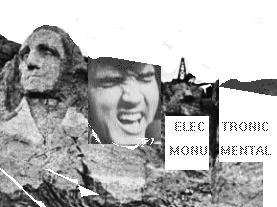
(Figure 1: Florida Rushomore by Gregory Ulmer. Used with permission.)
The other is called "Traffic Sphere," a daily computer print out of traffic
deaths, available to visitors of the Vietnam Veterans Memorial in Washington
DC, intended "to make highway fatalities perceptible, thinkable, recognizable
as sacrifice" (p. 43). Neither of these MEmorials have been actualized,
making the peripheral more of a thought experiment than a building project,
but as noted above, and in the tradition of influential but un-built architecture,
the ideas worked out in these proposals may be sufficiently influential.
Barry Mauer, more than any other scholar, has explicitly followed Ulmer's
lead in exploring electronic monumentality. Mauer (1996) reported on an
electronic monumentality assignment he used with first-year students, breaking
Ulmer's complex genre into a single statement, a single instruction: "Construct
an abject
electronic
monument
for understanding
a personal/cultural
loss."
This streamlined approach to teaching electronic monumentality would still
be valuable for a first-year composition class or other undergraduate classes,
but does not support students or scholars in a way that would enable them
to explore all the possibilities of a MEmorial. Mauer more recently has
constructed his own proposal for a "Monument to Lost Data" in
two parts (2005; 2008), shifting the focus in his scholarship from pedagogy
to self-reflective scholarship. In these essays, Mauer provides a model
or what Ulmer might call a relay for other scholars to begin considering
and exploring the possibility of MEmorialization as a viable, tenurable,
scholarly activity.
The MEmorial, however, is not meant to be the end goal of electracy or post-critical
composition. This genre, these examples, and our collective composing process
are part of Ulmer's larger project of working out the practice of electracy.
In asking students to work with the genre of MEmorial, I was also asking
students to work with qualities of electracy defined by Jeff Rice (2007):
choral writing, appropriation, juxtaposition, commutation, nonlinearity,
and imagery. We were testing, or considering the value of post-critical
political engagement by comparing Ulmer's suggestions for re-engaging with
the public sphere to the more familiar ideas of activist research and service
learning (Cushman 1999) and critical pedagogy (Giroux 2007). Byron Hawk
(2007) argues that Ulmer's work in general, prior to and including Electronic
Monuments, "allows students to be liberated from a predetermined
way of viewing and linking up to the world: he allows the students the agency
to invent and articulate their own compositions or desiring-machines"
(246). Ulmer's students and colleagues (Rice and O'Gorman 2008; Saper, Freeman,
& Garrett-Petts 2008), now referred to, tongue in cheek, as "The
Florida School," exemplify the possibilities that Ulmer's work opens
up as they invent new genres and explore new electrate practices.
In trying to build on Ulmer's and Mauer's scholarship in this webtext, my
work is still partially pedagogical (I have asked my students to test this
genre), and partially directed at other scholars, encouraging them to address
socio-politico-technical problems through MEmorialization, through a process
of writing with disasters, rather than writing about them. The pedagogical
element is addressed through my students' reflection on their work, and
specifically the way in which it builds on my earlier essay. In "Exploring
Post-Critical Composition," I focused on the six MEmorial elements
Ulmer (2005) identifies as keys to the "abject genre" (p. 48).
Neither Aaron nor I fully developed the potential of our MEmorials; neither
of us developed a peripheral, nor used an emblem, motto, or slogan to synthesize
and concentrate our work. In this webtext, then, I have asked my students
to reflect on the general process of developing and executing the MEmorial,
but also specifically to reflect on the role and importance of their peripheral
and their emblem, motto, and slogan. I also asked them to reflect on the
place of the MEmorial in education, post 9-11, framed specifically by a
set of questions: Is the MEmorial activist research? Is it the kind of rhetorical
act we need post 9/11? Is this the kind of education we need, period?
My students reflections in whole can be found on our class wiki, but they
have been synthesized and condensed here. In our scholarship on new media,
multimodal composition, or post-critical composition, it is important to
be honest about and try to show the range of student work performed and
executed. Readers will undoubtedly find some of the MEmorials more interesting
and successful than others; readers will find some of the reflections more
insightful or useful than others. My hope is that the range of projects,
from Blogger-sites as websites to a comic book and Ning social network,
will give the next set of MEmorialists more examples to build-on and learn
from. If these projects have been sufficiently successful, they will supplement,
perhaps surpass, the overt pedagogical directions Ulmer and I gave them.
If these projects in some ways come up short of successful MEmorialization,
those limitations will point to the need for additional reflection and pedagogy,
or perhaps a limitation of the genre. As my students are willing to say,
this genre, its conventions and purposes, are by no means settled, and should
not, without further testing, supplant the genres of schooling that are
still viable as we go through the long transition from literacy to electracy.

